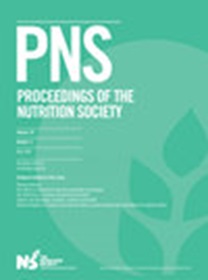补充维生素 D2 对 25- 羟维生素 D3 状态的影响:随机对照试验的系统回顾和荟萃分析
IF 7.6
2区 医学
Q1 NUTRITION & DIETETICS
引用次数: 0
摘要
众所周知,维生素 D2 和 D3 的生物功能存在差异。随机对照试验(RCT)数据怀疑,补充维生素 D2 会导致血清中 25- 羟维生素 D3(25(OH)D3)浓度降低(1),但这种影响的大小尚未在多项研究中得到全面评估。本研究旨在对补充维生素 D2 对血清 25(OH)D3 浓度的影响进行系统回顾和荟萃分析。在检索到的 182 篇论文中,有 29 篇被纳入系统综述,其中 18 篇适合进行荟萃分析。荟萃分析发现,与对照组相比,补充维生素 D2 后血清 D3 在试验结束时的组间数据均显著降低(加权平均差 (WMD) (random) = -13.51 nmol/L; 95% CI: -20.14, -6.89; P < 0.0001)和试验期间的绝对变化(WMD (random) = -9.25 nmol/L; 95% CI: -14.40, -4.10; P = 0.0004)。将补充 D2 与补充 D3 进行比较时,也发现了类似的结果,但正如预期的那样,差异的幅度更大,试验结束数据的 WMD(随机)= -46.20 nmol/L (95% CI: -60.80, -31.60; P < 0.00001),WMD(随机)= -56.23 nmol/L (95% CI: -69.17, -43.28; P <0.00001)。总体而言,我们发现与对照组或维生素 D3 补充剂相比,维生素 D2 补充剂会显著降低血清 25(OH)D3 浓度。有文献提出维生素 D2 和 D3 浓度之间存在反比关系(2)。维生素 D 浓度增加后,25(OH)D 会被排出体外的调节机制可以解释我们的研究结果(3)。此外,补充维生素 D2 和 D3 对基因表达有不同的影响(4)。不过,还需要进行更长期的研究,以确定临床建议是否应酌情推荐补充维生素 D3 而不是维生素 D2。本文章由计算机程序翻译,如有差异,请以英文原文为准。
Effect of vitamin D2 supplementation on 25-hydroxyvitamin D3 status: a systematic review and meta-analysis of randomised controlled trials
There are known differences in biological functionality between vitamin D2 and D3. It is suspected from randomised control trial (RCT) data that vitamin D2 supplementation causes a reduction in serum 25-hydroxyvitamin D3 (25(OH)D3) concentrations (1) , but the size of the effect has yet to be fully assessed across multiple studies. The aim of this study was to undertake a systematic review and meta-analysis of the effect of vitamin D2 supplementation on serum 25(OH)D3 concentrations.PUBMED was searched for publications from 1st January 1975 to 1st February 2023. Of the 182 papers retrieved, 29 were included in the systematic review, and of those, 18 were suitable for meta-analysis.The meta-analysis found significant reductions in serum D3 after vitamin D2 supplementation compared with control, for both end of trial between groups data (weighted mean difference (WMD) (random) = −13.51 nmol/L; 95% CI: −20.14, −6.89; P < 0.0001) and absolute change over the trial (WMD (random) = −9.25 nmol/L; 95% CI: −14.40, −4.10; P = 0.0004). Similar results were found when D2 supplementation was compared to D3 supplementation, although as expected, the magnitude of the difference was larger, with WMD (random) = −46.20 nmol/L (95% CI: −60.80, −31.60; P < 0.00001) for end of trial data, and WMD (random) = −56.23 nmol/L (95% CI: -69.17, −43.28; P < 0.00001) for absolute change.Overall, we found that vitamin D2 supplementation produces significant reductions in serum 25(OH)D3 concentrations, when compared to either control or vitamin D3 supplementation. An inverse relationship between vitamin D2 and D3 concentrations has been proposed in the literature (2) . A regulatory mechanism that disposes of 25(OH)D after an increase in vitamin D concentrations could explain our results (3) . Moreover, supplementation with vitamins D2 and D3 has differential effects on gene expression (4) . However, longer-term research is needed to establish whether clinical advice should recommend vitamin D3 supplements over vitamin D2 supplements, where appropriate.
求助全文
通过发布文献求助,成功后即可免费获取论文全文。
去求助
来源期刊
CiteScore
15.50
自引率
0.00%
发文量
190
审稿时长
6-12 weeks
期刊介绍:
Proceedings of the Nutrition Society publishes papers and abstracts presented by members and invited speakers at the scientific meetings of The Nutrition Society. The journal provides an invaluable record of the scientific research currently being undertaken, contributing to ''the scientific study of nutrition and its application to the maintenance of human and animal health.'' The journal is of interest to academics, researchers and clinical practice workers in both human and animal nutrition and related fields.

 求助内容:
求助内容: 应助结果提醒方式:
应助结果提醒方式:


